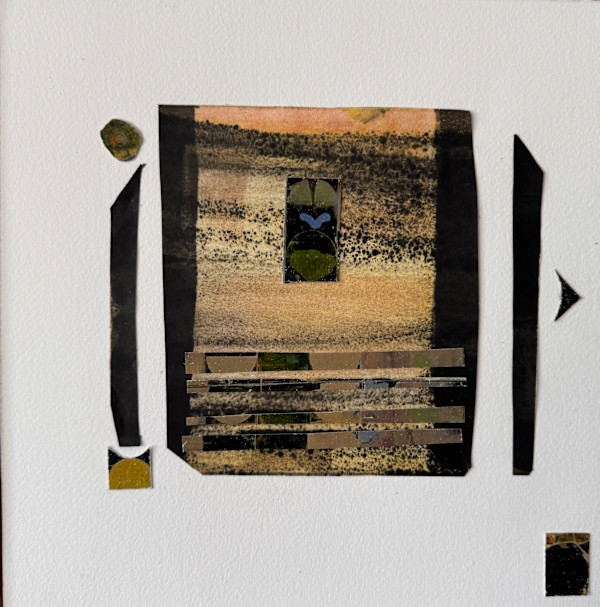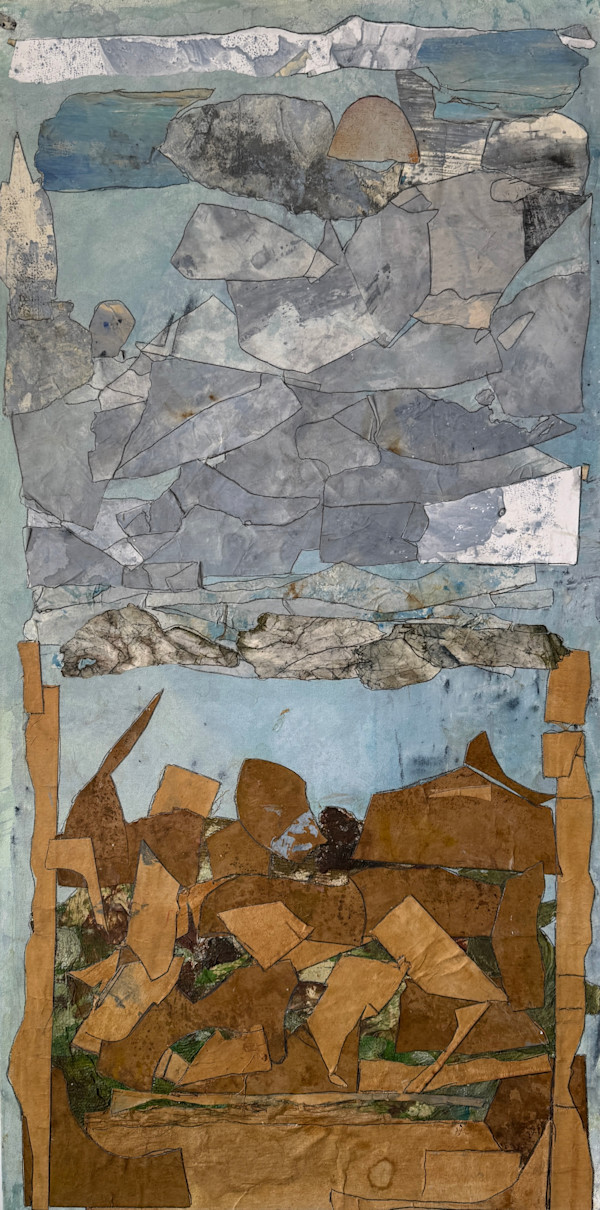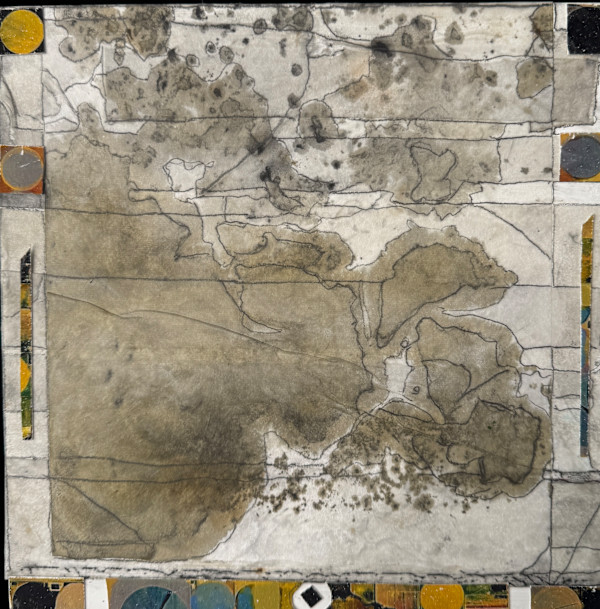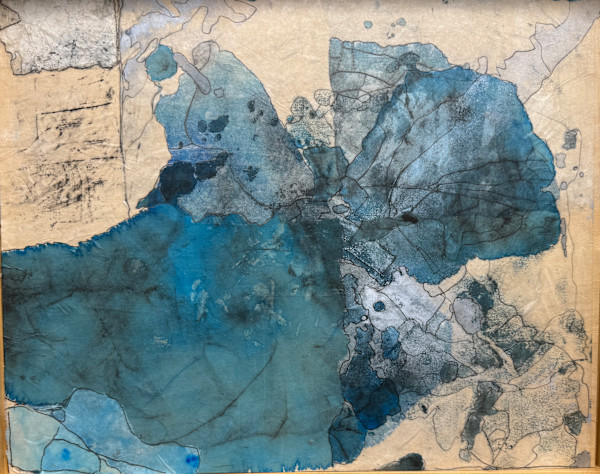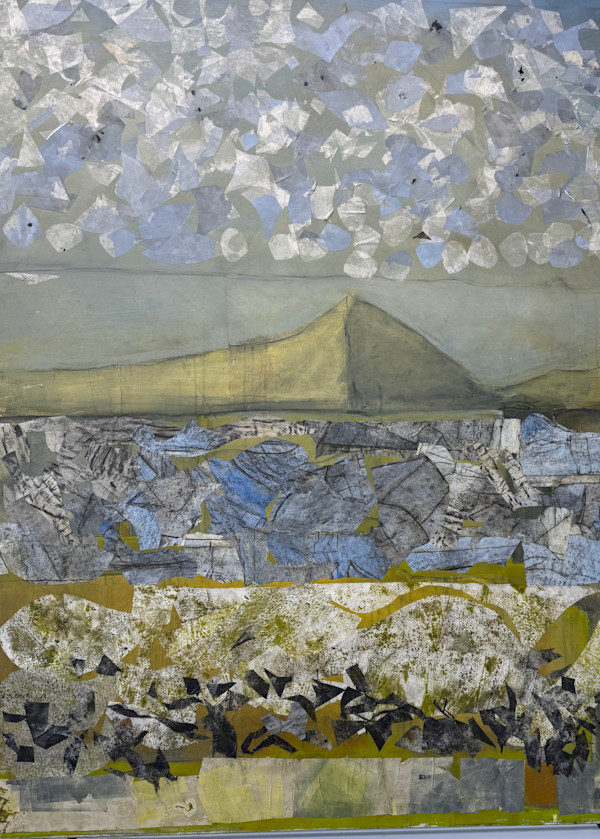
Sumer is Icumen In (from The Condition of Music series)
This composition unfolds like a medieval round — a polyphonic field of rhythm and renewal. Torn paper, pigment, and graphite weave together in overlapping layers of pale green, blue, and ochre, suggesting both landscape and soundscape: spring rising through stone, thaw meeting current, and fragments of melody echoing in visual form.
The work takes its title from the 13th-century English canon “Sumer is icumen in” — the earliest known example of polyphonic music in Western tradition. Its joyful cycles of imitation and counterpoint parallel the visual interplay of this piece: shapes echoing shapes, tones repeating in altered form, harmony born from difference.
Original Middle English:
Sumer is icumen in,
Lhude sing cuccu!
Groweth sed and bloweth med
And springth the wude nu—
Sing cuccu!
Modern English Translation:
Summer has come in,
Loudly sing, cuckoo!
The seed grows and the meadow blooms,
And the wood springs anew—
Sing, cuckoo!
The song celebrates emergence — the return of life, of light, of sound itself. In this painting, pale blues and translucent greens rise through the surface like thawing rivers; the overlapping forms mimic the canon’s interwoven voices.
Within The Condition of Music series, Sumer is Icumen In marks a shift from lament to renewal — from the minor key of sorrow to the luminous intervals of spring. The structure of the work, like the round itself, depends on repetition, imitation, and cumulative resonance — visual polyphony. Each fragment adds its own voice until the surface hums with quiet vitality.
In this way, the piece embodies Walter Pater’s idea that “all art constantly aspires to the condition of music.” Here, painting becomes song — rhythm made visible, time suspended in color, and harmony rediscovered in the act of reconstruction.
- Collections: Rock/Paper/Scissors , The Condition of Music


